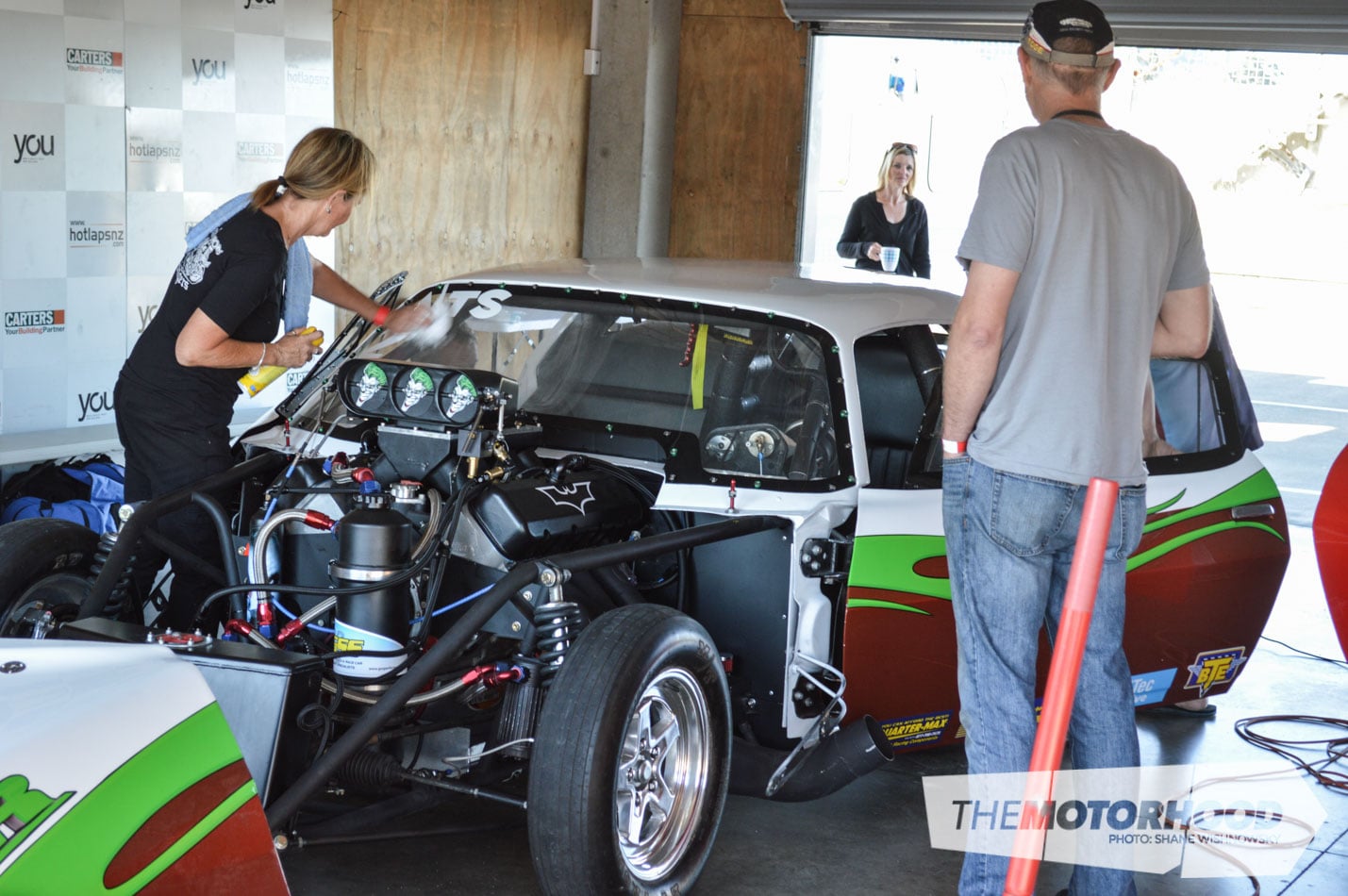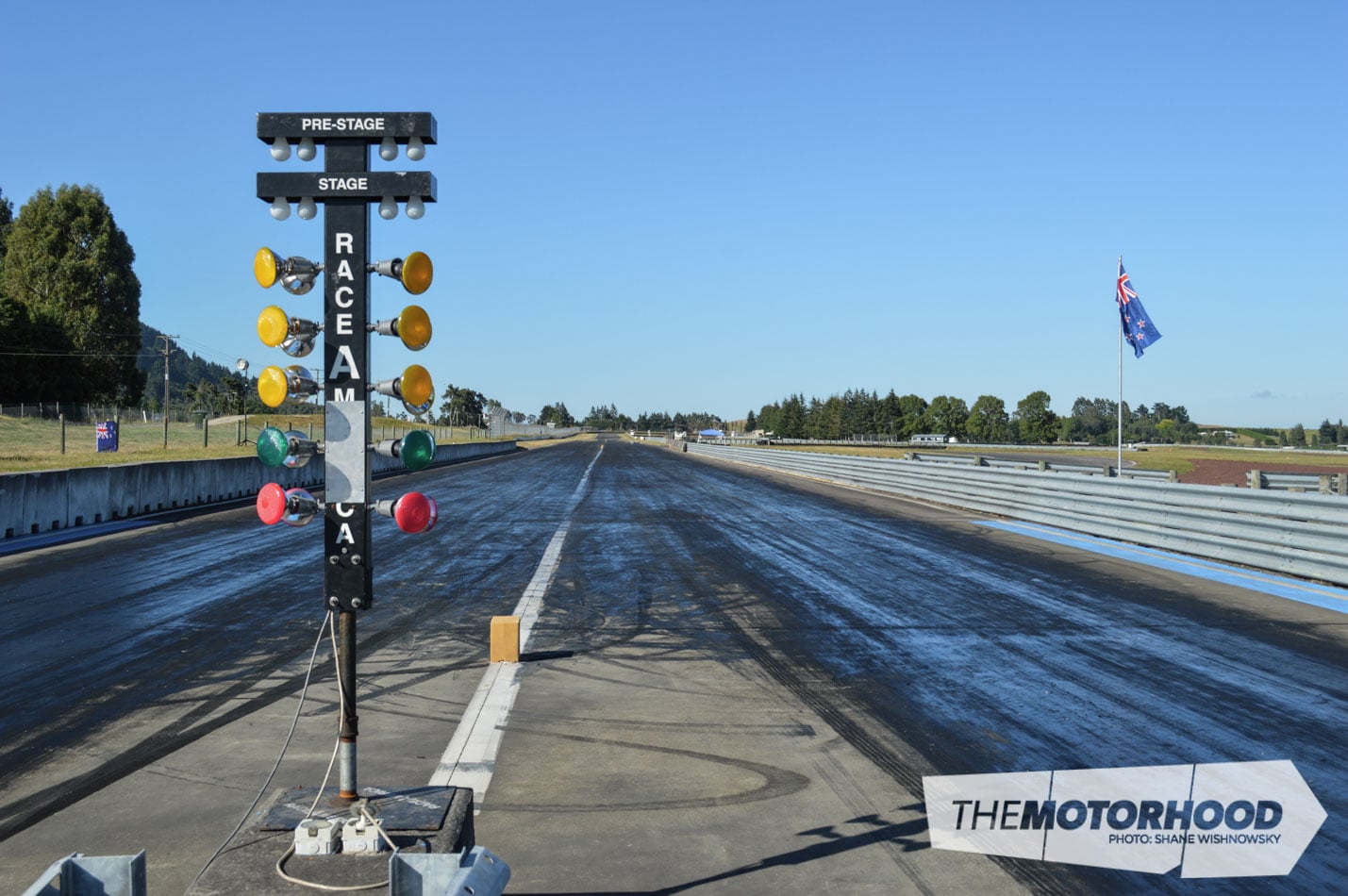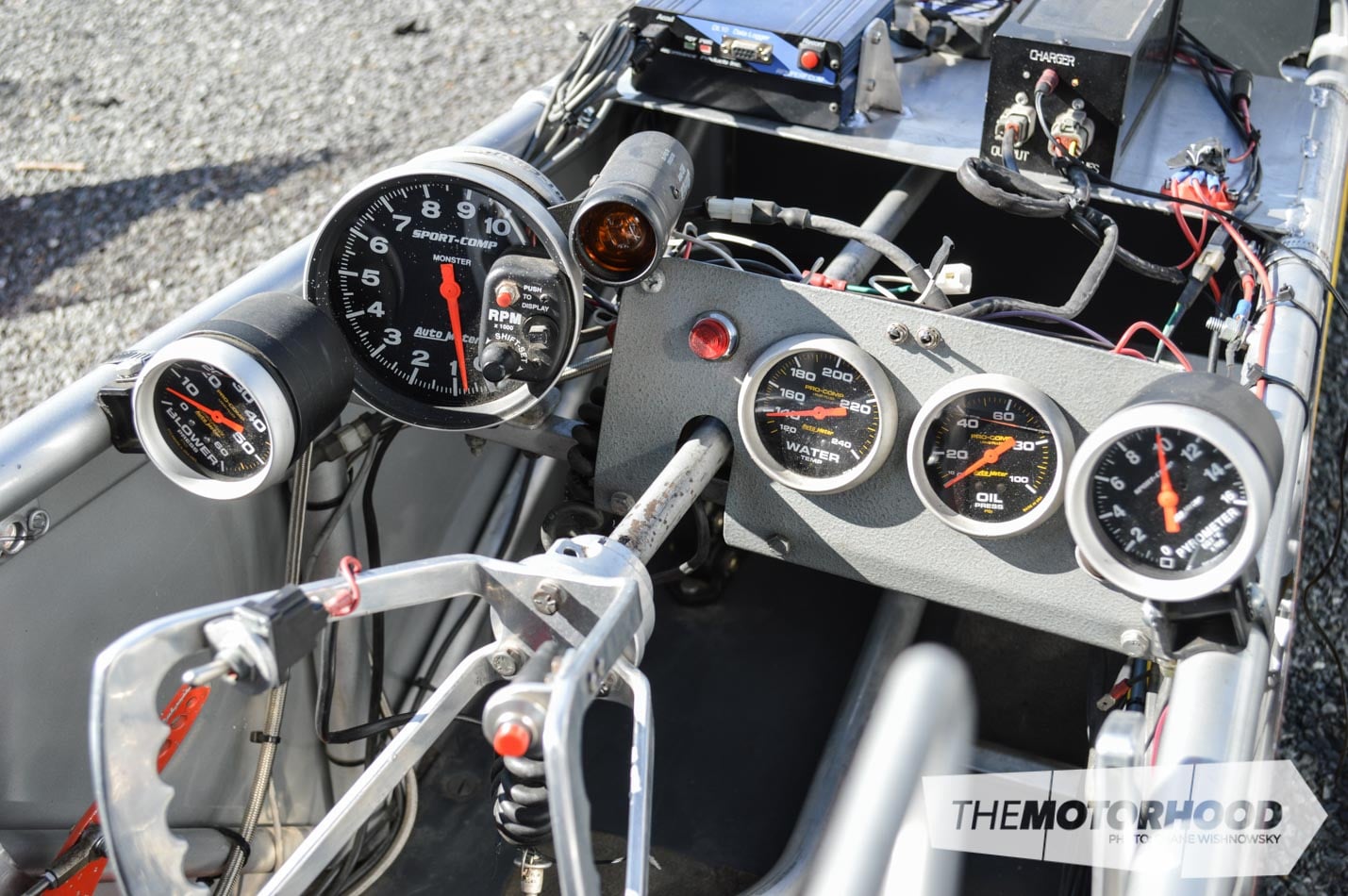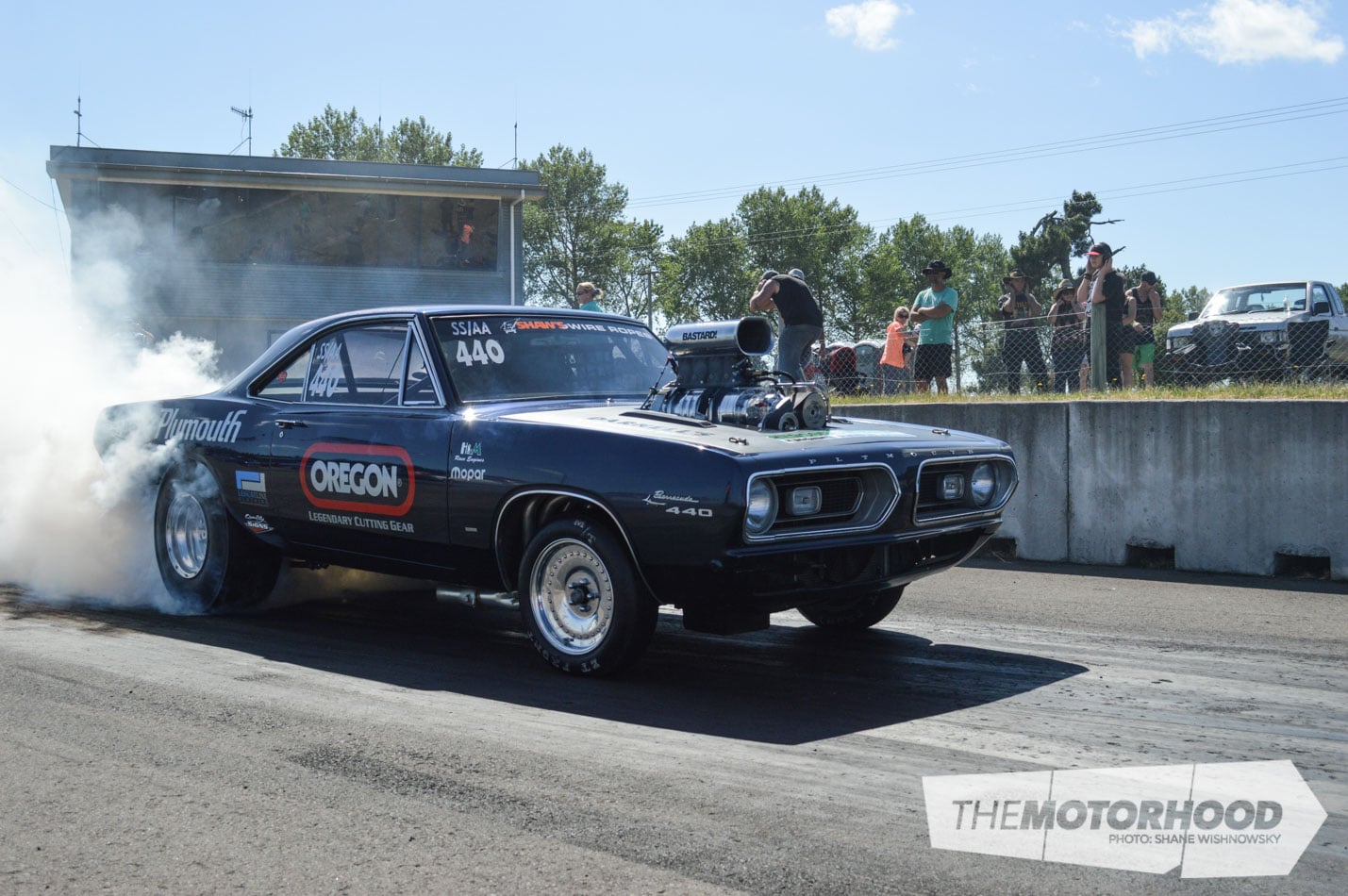If you ask a local, Taupo is the holiday destination to be at around the Christmas and New Year holiday period. Be it beautiful scenery, great fishing, or heart-stopping risk taking for the adrenaline junkie, it’s all there in Taupo. While all that is nice, we decided to bypass that fun and hilarity and take in some action that’s a little more obnoxious and in your face — a trip to the drags.
You guys have no doubt all read our event reviews, looked at the pictures, or even attended a meeting or two, and are well versed in the action that happens on the track. We decided to do things a little differently this time, by focusing more on the behind-the-scenes stuff that happens at every track around New Zealand.
More often than not, the time spent in the shed getting the car prepped and ready for the big day gets longer and longer, with many late nights to be had leading up to any race meeting. If you have to wait for shiny stuff to arrive from the States, then the mad thrash to be ready can become even worse. Honestly, we don’t know how some cars even make the track given how torn apart they were in the week leading up to an event.

If you are like us and arrive well before the scheduled start, then you will no doubt be familiar with the aroma of bacon and eggs.
There is nothing better than starting the day with a bacon buttie, and with most racers arriving the day before and camping at the track, it’s a great way to settle the stomach after a late night of ‘entertaining’.

Generally speaking, race-day morning is often an early one, with every crew member up and busy well before the spectators arrive — hence the need for a hearty breakfast — as it’s no easy task getting these land-based ballistic missiles ready to hurl themselves down the track.

Cars need to be cleaned …

Parachutes need to be packed …

And fuel tanks need to be filled.

In addition to the cars and crew being hauled all around the countryside, the tools required to keep these things in one piece are extensive to say the least, with most top teams having essentially a mobile workshop at their disposal.

Racing can be a family affair with mum, dad, and the kids often sharing the driving duties, or, in this case, grandma, grandad, and uncle in the big car …

And granddaughter in the little one. Having turned eight years old only days before, Taupo was an ideal place for Sophie to get her licence, making three generations of drag racers. How cool is that?!

If ever there was a time for spectators to really see what makes these beasts tick, this is it, as the cars are often as disassembled as they will ever be. Just be sure to keep out of the way of the crew, as they will be so focused on what they are doing, you may get trodden on!

You may think that getting from point A to point B quickly is a relatively simple task, but given the multitude of different ways to make horsepower, this is far from the case. Some use a supercharger …

And there’s even a mad bastard — Mike Black — who decided one blower was not enough!

Some use nitrous oxide.

Turbos are starting to become a lot more common too …

And when you have the room, two is always better than one!

Less common, but starting to make more of an appearance is a combination of the two: the centrifugal supercharger — essentially a belt-driven turbo. Hopefully everyone brought their earplugs when Gary Cawthra fired this one up, as it was easily the loudest vehicle in attendance!

Once every box on the list of things to do has been checked off, it’s time to fire things into life and make sure everything works. There’s a hell of a lot of money tied up in these cars and if something catastrophic happens, it can be very, very expensive!

The calm before the storm. Prior to the first burnout being made, everyone gathers around for the drivers’ briefing. A brief rundown on the day’s proceedings, along with any housekeeping tasks that need to be taken care of, takes place. The obligatory thanks to all the hard-working volunteers and sponsors is also made. Without you guys, there would be no race meetings!

The call is made over the pit radio that it’s time to line up.

Keeping everyone entertained and up to date at the track are the voices from the tower. On one side of this tower is the important computer that runs the timing gear.

On the other side, the entertainment; the men on the mic!

With things starting to get serious, the nerves and the tension start to creep in. The drivers start to concentrate and mentally prepare themselves for what lies ahead — 1320 feet of sticky racetrack!

Bolt on the starter, squirt in some fuel, and let’s make some noise!

When it comes to the burnout, the longer the better!

Drivers are guided back into their tyre marks.

Final start-line adjustments to the car are made after the burnout.

Belts are given a final tweak to make sure the pilot is strapped in nice and tight.

Stage your car and wait for the tree to count down.

Jump in your tow car and race your car to the end!

Once you have been towed or driven back to the pits it’s time to cool things down.

Check everything over for the next run.

Have a look at the data and make any necessary adjustments.

Once that’s all done, if everything has gone well with the last run, drivers and crew can have a little breather before they head out and do it all over again.
And you thought drag racing was easy!










